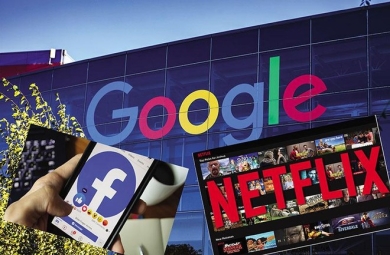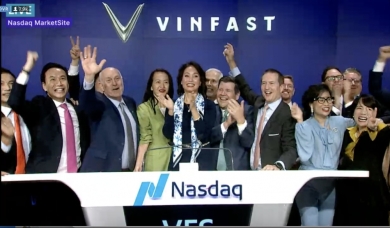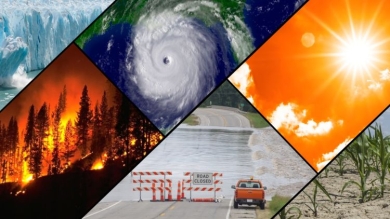
China’s diplomats and tech companies pin their hopes on partnerships in the Global South.
Still image from Ho Tzu Nyen's "The Nameless," a film about a mysterious Sino-Vietnamese communist and spy working in Southeast Asia in the first half of the 20th century. (Courtesy of the artist and Kiang Malingue Gallery)
SHANGHAI — Over the past generation, China’s most important relationships were with the more developed world, the one that used to be called the “first world.” Mao Zedong proclaimed China to be the leader of a “third” (non-aligned) world back in the 1970s, and the term later came to be a byword for deprivation. The notion of China as a developing country continues to this day, even as it has become a superpower; as the tech analyst Dan Wang has joked, China will always remain developing — once you’re developed, you’re done.
Fueled by exports to the first world, China became something different — something not of any of the three worlds. We’re still trying to figure out what that new China is and how it now relates to the world of deprivation — what is now called the Global South, where the majority of human beings alive today reside. But amid that uncertainty, Chinese exports to the Global South now exceed those to the Global North considerably — and they’re growing.
The International Monetary Fund expects Asian countries to account for 70% of growth globally this year. China must “shape a new international system that is conducive to hedging against the negative impacts of the West’s decoupling,” the scholar and former People’s Liberation Army theorist Cheng Yawen wrote recently. That plan starts with Southeast Asia and extends throughout the Global South, a terrain that many Chinese intellectuals see as being on their side in the widening divide between the West and the rest.
“The idea is that what China is today, fast-growing countries from Bangladesh to Brazil could be tomorrow.”
China isn’t exporting plastic trinkets to these places but rather the infrastructure for telecommunications, transportation and digitally driven “smart cities.” In other words, China is selling the developmental model that raised its people out of obscurity and poverty to developed global superpower status in a few short decades to countries with people who have decided that they want that too.
The world China is reorienting itself to is a world that, in many respects, looks like China did a generation ago. On offer are the basics of development — education, health care, clean drinking water, housing. But also more than that — technology, communication and transportation.
Back in April, on the eve of a trip to China, Brazilian President Luiz Inacio Lula da Silva sat down for an interview with Reuters. “I am going to invite Xi Jinping to come to Brazil,” he said, “to get to know Brazil, to show him the projects that we have of interest for Chinese investment. … What we want is for the Chinese to make investments to generate new jobs and generate new productive assets in Brazil.” After Lula and Xi had met, the Brazilian finance minister proclaimed that “President Lula wants a policy of reindustrialization. This visit starts a new challenge for Brazil: bringing direct investments from China.” Three months later, the battery and electric vehicle giant BYD announced a $624 million investment to build a factory in Brazil, its first passenger car manufacturing facility outside Asia.
Across the Global South, fast-growing countries from Bangladesh to Brazil can send raw materials to China and get technological devices in exchange. The idea is that what China is today, they could be tomorrow.
At The Kunming Institute of Botany
In April, I went to Kunming to visit one of China’s most important environmental conservation outfits — the Kunming Institute of Botany. Like the British Museum’s antiquities collected from everywhere that the empire once extended, the seed bank here (China’s largest) aspires to acquire thousands of samples of various plant species and become a regional hub for future biotech research.
From the Kunming train station, you can travel by Chinese high-speed rail to Vientiane; if all goes according to plan, the line will soon be extended to Bangkok. At Yunnan University across town, the economics department researches “frontier economics” with an eye to Southeast Asian neighboring states, while the international relations department focuses on trade pacts within the region and a community of anthropologists tries to figure out what it all means.
Kunming is a bland, air-conditioned provincial capital in a province of startling ethnic and geographic diversity. In this respect, it is a template for Chinese development around Southeast Asia. Perhaps in the future, Dhaka, Naypyidaw and Phnom Penh will provide the reassuring boredom of a Kunming afternoon.
Imagine you work at the consulate of Bangladesh in Kunming. Why are you in Kunming? What does Kunming have that you want?
The Bengali poet Rabindranath Tagore lyrically described Asia’s communities as organic and spiritual in contrast with the materialism of the West. As Tagore spoke of the liberatory powers of art, his Chinese listeners scoffed. The Chinese poet Wen Yiduo, who moved to Kunming during World War II and is commemorated with a statue at Yunnan Normal University in Kunming, wrote that Tagore’s work had no form: “The greatest fault in Tagore’s art is that he has no grasp of reality. Literature is an expression of life and even metaphysical poetry cannot be an exception. Everyday life is the basic stuff of literature, and the experiences of life are universal things.”
“Xi Jinping famously said that China doesn’t export revolution. But what else do you call train lines, 5G connectivity and scientific research centers appearing in places that previously had none of these things?”
If Tagore’s Bengali modernism championed a spiritual lens for life rather than the materiality of Western colonialists, Chinese modernists decided that only by being more materialist than Westerners could they regain sovereignty. Mao had said rural deprivation was “一穷二白” — poor and empty; Wen accused Tagore’s poetry of being formless. Hegel sneered that Asia had no history, since the same phenomena simply repeated themselves again and again — the cycle of planting and harvest in agricultural societies.
For modernists, such societies were devoid of historical meaning in addition to being poor and readily exploited. The amorphous realm of the spirit was for losers, the Chinese May 4th generation decided. Railroads, shipyards and electrification offered salvation.
Today, as Chinese roads, telecoms and entrepreneurs transform Bangladesh and its peers in the developing world, you could say that the argument has been won by the Chinese. Chinese infrastructure creates a new sort of blank generic urban template, one seen first in Shenzhen, then in Kunming and lately in Vientiane, Dhaka or Indonesian mining towns.
The sleepy backwaters of Southeast Asia have seen previous waves of Chinese pollinators. Low Lan Pak, a tin miner from Guangdong, established a revolutionary state in Indonesia in the 18th century. Li Mi, a Kuomintang general, set up an independent republic in what is now northern Myanmar after World War II.
New sorts of communities might walk on the new roads and make calls on the new telecom networks and find work in the new factories that have been built with Chinese technology and funded by Chinese money across Southeast Asia. One Bangladeshi investor told me that his government prefers direct investment to aid — aid organizations are incentivized to portray Bangladesh as eternally poor, while Huawei and Chinese investors play up the country’s development prospects and bright future. In the latter, Bangladeshis tend to agree.
“Is China a place, or is it a recipe for social structure that can be implemented generically anywhere?”
The majority of human beings alive today live in a world of not enough: not enough food; not enough security; not enough housing, education, health care; not enough rights for women; not enough potable water. They are desperate to get out of there, as China has. They might or might not like Chinese government policies or the transactional attitudes of Chinese entrepreneurs, but such concerns are usually of little importance to countries struggling to bootstrap their way out of poverty.
The first world tends to see the third as a rebuke and a threat. Most Southeast Asian countries have historically borne abuse in relationship to these American fears. Most American companies don’t tend to see Pakistan or Bangladesh or Sumatra as places they’d like to invest money in. But opportunity beckons for Chinese companies seeking markets outside their nation’s borders and finding countries with rapidly growing populations and GDPs. Imagine a Huawei engineer in a rural Bangladeshi village, eating a bad lunch with the mayor, surrounded by rice paddies — he might remember the Hunan of his childhood.
Xi Jinping famously said that China doesn’t export revolution. But what else do you call train lines, 5G connectivity and scientific research centers appearing in places that previously had none of these things?
Across the vastness of a world that most first-worlders would not wish to visit, Chinese entrepreneurs are setting up electric vehicle and battery companies, installing broadband and building trains. The world that is looming into view on Huawei’s 2022 business report is one in which Asia is the center of the global economy and China sits at its core, the hub from which sophisticated and carbon-neutral technologies are distributed. Down the spokes the other way come soybeans, jute and nickel. Lenin’s term for this kind of political economy was imperialism.
If the Chinese economy is the set of processes that created and create China, then its exports today are China — technologies, knowledge, communication networks, forms of organization. But is China a place, or is it a recipe for social structure that can be implemented generically anywhere?
Huawei Station
Huawei’s connections to the Chinese Communist Party remain unclear, but there is certainly a case of elective affinities. Huawei’s descriptions of selfless, nameless engineers working to bring telecoms to the countryside of Bangladesh is reminiscent of Party propaganda and “socialist realist” art. As a young man, Ren Zhengfei, Huawei’s CEO, spent time in the Chongqing of Mao’s “third front,” where resources were redistributed to develop new urban centers; the logic of starting in rural areas and working your way to the center, using infrastructure to rappel your way up, is embedded within the Maoist ideas that he studied at the time. Today, it underpins Huawei’s business development throughout the Global South.
I stopped by the Huawei Analyst Summit in April to see if I could connect the company’s history to today. The Bildungsroman of Huawei’s corporate development includes battles against entrenched state-owned monopolies in the more developed parts of the country. The story goes that Huawei couldn’t make inroads in established markets against state-owned competitors, so got started in benighted rural areas where the original leaders had to brainstorm what to do if rats ate the cables or rainstorms swept power stations away; this story is mobilized today to explain their work overseas.
Perhaps at one point, Huawei could have been just another boring corporation selling plastic objects to consumers across the developed world, but that time ended definitively with Western sanctions in 2019, effectively banning the company from doing business in the U.S. The sanctions didn’t kill Huawei, obviously, and they may have made it stronger. They certainly made it weirder, more militant and more focused on the markets largely scorned by the Ericssons and Nokias of the world. Huawei retrenched to its core strength: providing rural and remote areas with access to connectivity across difficult terrain with the intention that these networks will fuel telehealth and digital education and rapidly scale the heights of development.
Huawei used to do this with dial-up modems in China, but now it is building 5G networks across the Global South. The Chinese government is supportive of these efforts; Huawei’s HQ has a subway station named for the company, and in 2022 the government offered the company massive subsidies.
“For many countries in the Global South, the model of development exemplified by Shenzhen seems plausible and attainable.”
For years, the notion of an ideological struggle between the U.S. and China was dismissed; China is capitalist, they said. Just look at the Louis Vuitton bags. This misses a central truth of the economy of the 21st century. The means of production now are internet servers, which are used for digital communication, for data farms and blockchain, for AI and telehealth. Capitalists control the means of production in the United States, but the state controls the means of production in China. In the U.S. and countries that implicitly accept its tech dominance, private businesspeople dictate the rules of the internet, often to the displeasure of elected politicians who accuse them of rigging elections, fueling inequality or colluding with communists. The difference with China, in which the state has maintained clear regulatory control over the internet since the early days, couldn’t be clearer.
The capitalist system pursues frontier technologies and profits, but companies like Huawei pursue scalability to the forgotten people of the world. For better or worse, it’s San Francisco or Shenzhen. For many countries in the Global South, the model of development exemplified by Shenzhen seems more plausible and attainable. Nobody thinks they can replicate Silicon Valley, but many seem to think they can replicate Chinese infrastructure-driven middle-class consumerism.
As Deng Xiaoping said, it doesn’t matter if it is a black cat or a white cat, just get a cat that catches mice. Today, leaders of Global South countries complain about the ideological components of American aid; they just want a cat that can catch their mice. Chinese investment is blank — no ideological strings attached. But this begs the question: If China builds the future of Bangladesh, Indonesia, Pakistan and Laos, then is their future Chinese?
Telecommunications and 5G is at the heart of this because connectivity can enable rapid upgrades in health and education via digital technology such as telehealth, whereby people in remote villages are able to consult with doctors and hospitals in more developed regions. For example, Huawei has retrofitted Thailand’s biggest and oldest hospital with 5G to communicate with villages in Thailand’s poor interior — the sort of places a new Chinese high-speed train line could potentially provide links with the outside world — offering Thai villagers without the ability to travel into town the opportunity to get medical treatments and consultations remotely.
The IMF has proposed that Asia’s developing belt “should prioritize reforms that boost innovation and digitalization while accelerating the green energy transition,” but there is little detail about who exactly ought to be doing all of that building and connecting. In many cases and places, it’s Chinese infrastructure and companies like Huawei that are enabling Thai villagers to live as they do in Guizhou.
Chinese Style Modernization?
The People’s Republic of China is “infinitely stronger than the Soviet Union ever was,” the U.S. ambassador to China, Nicholas Burns, told Politico in April. This prowess “is based on the extraordinary strength of the Chinese economy — its science and technology research base, its innovative capacity and its ambitions in the Indo-Pacific to be the dominant power in the future.” This increasingly feels more like the official position of the U.S. government than a random comment.
Ten years ago, Xi Jinping proposed the notion of a “maritime Silk Road” to the Indonesian Parliament. Today, Indonesia is building an entirely new capital — Nusantara — for which China is providing “smart city” technologies. Indonesia has a complex history with ethnic Chinese merchants, who played an intermediary role between Indigenous people and Western colonists in the 19th century and have been seen as CCP proxies for the past half century or so. But the country is nevertheless moving decisively towards China’s pole, adopting Chinese developmental rhythms and using Chinese technology and infrastructure to unlock the door to the future. “The internet, roads, ports, logistics — most of these were built by Chinese companies,” observed a local scholar.
The months since the 20th Communist Party Congress have seen the introduction of what Chinese diplomats call “Chinese-style modernization,” a clunky slogan that can evoke the worst and most boring agitprop of the Soviet era. But the concept just means exporting Chinese bones to other social bodies around the world.
If every apartment decorated with IKEA furniture looks the same, prepare for every city in booming Asia to start looking like Shenzhen. If you like clean streets, bullet trains, public safety and fast Wi-Fi, this may not be a bad thing.
Chinese trade with Southeast Asia is roughly double that between China and the U.S., and Chinese technology infrastructure is spreading out from places like the “Huawei University” at Indonesia’s Bandung Institute of Technology, which plans to train 100,000 telecom engineers in the next five years. We’re about to see a generation of “barefoot doctors” throughout Southeast Asia traveling by moped across landscapes of underdevelopment connected to hubs of medical data built by Chinese companies with Chinese technology.
In 1955, the year of the Bandung Conference in Indonesia, the non-aligned world was almost entirely poor, cut off from the means of production in a world where nearly 50% of GDP globally was in the U.S. Today, the logic of that landmark conference is alive in Chinese informal networks across the Global South, with the key difference that China can now offer these countries the possibility of building their own future without talking to anyone from the Global North.
Welcome to the Sinosphere, where the tides of Chinese development lap over its borders into the remote forests of tropical Asia, and beyond.
Jacob Dreyer is a writer and editor based in Shanghai.









